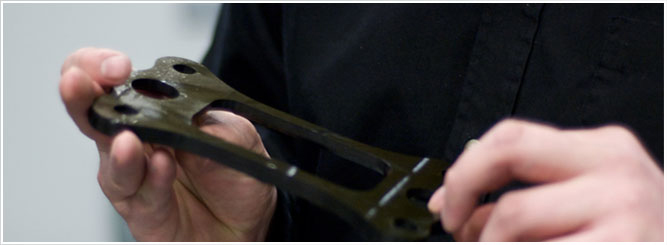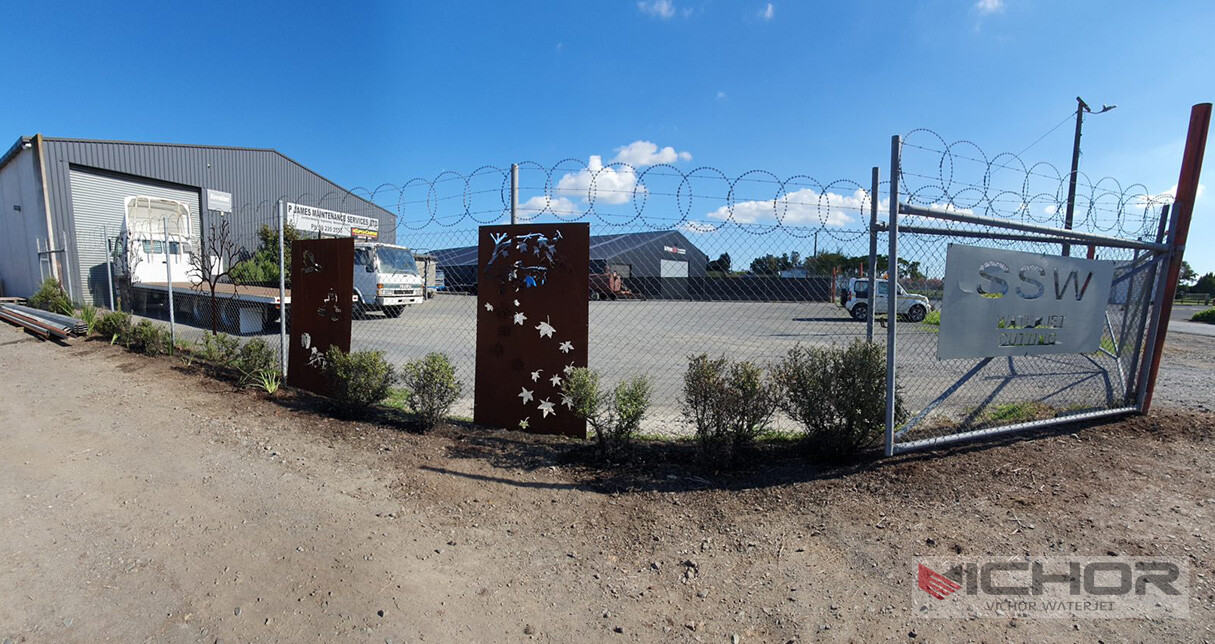
Water Jet and Abrasive Water Jet Machining: Transforming Industrial Cutting Processes
In the realm of modern manufacturing, precision and efficiency are paramount. Among the various technologies available, water jet and abrasive water jet machining stand out as versatile and powerful methods for cutting a wide range of materials. These processes utilize high-pressure water streams, sometimes mixed with abrasives, to achieve intricate cuts without generating heat-affected zones. This article delves into the intricacies of water jet and abrasive water jet machining, exploring their principles, benefits, applications, and more. By understanding these technologies, industries can harness their potential to enhance productivity and innovation.
What Are Water Jet and Abrasive Water Jet Machining?
Water jet and abrasive water jet machining are non-traditional machining processes that use high-velocity streams of water, or water mixed with abrasive particles, to cut materials. Pure water jet machining involves directing a focused stream of water at extremely high pressures—often exceeding 60,000 psi—to slice through soft materials like foam, rubber, or food products. In contrast, abrasive water jet machining incorporates abrasive materials, such as garnet or aluminum oxide, into the water stream, enabling it to cut harder substances like metals, ceramics, and composites. The combination of water jet and abrasive water jet machining offers a comprehensive solution for diverse industrial needs, providing a cold-cutting alternative that avoids thermal distortion and preserves material integrity.
The origins of water jet and abrasive water jet machining date back to the 1970s, when researchers began experimenting with high-pressure water for industrial applications. Over the decades, advancements in pump technology and control systems have refined these processes, making them more accessible and efficient. Today, water jet and abrasive water jet machining are integral to many sectors, from aerospace to automotive, due to their adaptability and precision. Understanding the fundamental differences between pure water jet and abrasive-enhanced versions is crucial for selecting the right method for specific tasks, ensuring optimal results in material processing.
How Does Water Jet and Abrasive Water Jet Machining Work?
The operational principles of water jet and abrasive water jet machining are rooted in fluid dynamics and erosion mechanics. In pure water jet machining, a high-pressure pump intensifies water pressure, which is then forced through a small orifice, typically made of sapphire or diamond, to create a coherent jet traveling at speeds up to three times the speed of sound. This jet impacts the material, eroding it through sheer kinetic energy. This process is ideal for softer materials where heat generation or mechanical stress must be minimized.
For tougher materials, water jet and abrasive water jet machining evolve by introducing abrasives into the stream. In abrasive water jet machining, the high-velocity water stream passes through a mixing chamber where abrasive particles are entrained. The mixture then exits through a focusing tube, often made of carbide, which directs the abrasive-laden jet onto the workpiece. The abrasives amplify the cutting power by micro-machining the material surface, allowing for precise cuts in hard metals, stone, or glass. The entire system is controlled by computer numerical control (CNC) technology, enabling complex shapes and patterns with tolerances as tight as 0.1 mm. This synergy between water and abrasives in water jet and abrasive water jet machining ensures clean edges and minimal material waste, making it a preferred choice for high-stakes applications.
Key components in water jet and abrasive water jet machining include the high-pressure pump, intensifier or direct-drive system, abrasive delivery system (for abrasive versions), and the cutting head. Maintenance of these components is vital for sustained performance, as wear and tear can affect cut quality. Regular inspection of orifices and focusing tubes helps maintain the efficiency of water jet and abrasive water jet machining systems, ensuring consistent results across production runs.
Advantages of Using Water Jet and Abrasive Water Jet Machining
The benefits of water jet and abrasive water jet machining are numerous, contributing to their widespread adoption. One of the most significant advantages is the absence of heat-affected zones (HAZ). Unlike laser or plasma cutting, which generate high temperatures that can alter material properties, water jet and abrasive water jet machining operate at ambient temperatures, preserving the structural integrity of materials like tempered steel or heat-sensitive alloys. This cold-cutting capability reduces the need for post-processing, saving time and costs.
Another key benefit is the versatility of water jet and abrasive water jet machining. These processes can handle a vast array of materials, from delicate fabrics to robust titanium, without requiring tool changes. This flexibility allows manufacturers to streamline operations and reduce setup times. Additionally, water jet and abrasive water jet machining are environmentally friendly, as they produce no hazardous fumes or dust, and water can often be recycled in closed-loop systems. The minimal kerf width and narrow cut paths result in less material waste, promoting sustainability.
Precision and repeatability are hallmarks of water jet and abrasive water jet machining. With CNC integration, these systems achieve high accuracy and complex geometries, making them ideal for prototyping and mass production. The ability to cut without inducing mechanical stresses means that brittle materials like glass or ceramics can be processed without cracking. Overall, the advantages of water jet and abrasive water jet machining underscore their role as efficient, safe, and adaptable solutions in modern manufacturing.
Applications of Water Jet and Abrasive Water Jet Machining in Industry
Water jet and abrasive water jet machining find applications across diverse industries due to their adaptability and precision. In the aerospace sector, these technologies are used to cut composite materials, titanium components, and aluminum alloys for aircraft structures. The ability to maintain material properties without heat damage is critical here, as even minor alterations can compromise safety. Similarly, the automotive industry employs water jet and abrasive water jet machining for fabricating parts like gaskets, interior panels, and custom components, where tight tolerances and clean edges are essential.
The architecture and construction fields benefit from water jet and abrasive water jet machining for cutting stone, tiles, and glass for decorative and structural elements. Intricate designs in marble or granite are achievable with these processes, enabling creative expressions in building projects. In the medical device industry, water jet and abrasive water jet machining are utilized to produce precise implants, surgical instruments, and biocompatible materials, ensuring sterility and accuracy. Even the food industry uses pure water jet machining for portioning products like pastries or meat without contamination, highlighting the hygiene aspects.
Emerging applications of water jet and abrasive water jet machining include art and design, where artists leverage these technologies to create sculptures and installations from various materials. The electronics industry also adopts them for cutting circuit boards and sensitive components without electrostatic damage. The widespread use of water jet and abrasive water jet machining across these sectors demonstrates their versatility and capacity to drive innovation, making them indispensable tools in contemporary fabrication.
Key Differences Between Water Jet and Abrasive Water Jet Machining
While both methods fall under the umbrella of water-based cutting, understanding the distinctions between pure water jet and abrasive water jet machining is essential for optimal application. Pure water jet machining relies solely on high-pressure water streams and is best suited for softer materials such as plastics, rubber, or food items. It offers smooth cuts without contamination but lacks the power to handle hard substances. In contrast, abrasive water jet machining incorporates abrasives to enhance cutting capability, enabling it to process metals, ceramics, and hardened steels. This makes water jet and abrasive water jet machining a complementary pair, with the abrasive version extending the range of applications.
The equipment for water jet and abrasive water jet machining also differs. Pure water jet systems have simpler setups with fewer components, focusing on water delivery and pressure control. Abrasive water jet systems include additional elements like abrasive hoppers, mixing chambers, and wear-resistant focusing tubes, which require more maintenance but offer greater versatility. Cost considerations play a role too; abrasive water jet machining tends to be more expensive due to abrasive consumption and part wear, but it justifies the investment through its ability to cut challenging materials.
In terms of performance, water jet and abrasive water jet machining vary in cut speed and quality. Pure water jet machining is faster for soft materials but slower for hard ones, whereas abrasive water jet machining maintains consistent speeds across material types. The choice between them depends on factors like material hardness, desired finish, and budget. By evaluating these differences, users can effectively leverage water jet and abrasive water jet machining to meet specific project requirements, maximizing efficiency and outcomes.
The Future of Water Jet and Abrasive Water Jet Machining
The evolution of water jet and abrasive water jet machining continues to shape manufacturing landscapes, with ongoing research focused on enhancing speed, accuracy, and sustainability. Innovations in pump technology aim to achieve higher pressures with lower energy consumption, reducing the environmental footprint of water jet and abrasive water jet machining. Developments in abrasive recycling systems are also gaining traction, as they can lower operational costs and minimize waste, making these processes more economical.
Automation and smart technology integration are set to revolutionize water jet and abrasive water jet machining. The adoption of IoT (Internet of Things) sensors and AI-driven monitoring can enable real-time adjustments, predictive maintenance, and improved quality control. This could lead to fully autonomous water jet and abrasive water jet machining systems that optimize production lines with minimal human intervention. Additionally, advancements in nozzle design and abrasive materials may further expand the capabilities of water jet and abrasive water jet machining, allowing for even finer details and faster throughput.
As industries push for greener manufacturing practices, water jet and abrasive water jet machining are poised to play a pivotal role due to their eco-friendly nature. The future may see increased adoption in renewable energy sectors, such as cutting components for wind turbines or solar panels. Overall, the trajectory of water jet and abrasive water jet machining points toward greater efficiency, accessibility, and innovation, solidifying their status as key technologies in the fourth industrial revolution.
Water jet and abrasive water jet machining represent cutting-edge solutions that address the demands of precision, versatility, and sustainability in modern industry. From their fundamental principles to broad applications, these technologies offer distinct advantages over traditional methods, particularly in avoiding heat-related damage and handling diverse materials. As advancements propel water jet and abrasive water jet machining forward, their impact on manufacturing will only grow, enabling new possibilities in design and production. By embracing these processes, businesses can achieve higher quality outcomes while contributing to a more efficient and environmentally conscious future.
Frequently Asked Questions
Q1: What is the primary difference between water jet and abrasive water jet machining?
A1: The main difference lies in the cutting medium: pure water jet machining uses only high-pressure water for soft materials, while abrasive water jet machining adds abrasive particles to the water stream to cut harder substances like metals and ceramics.
Q2: What types of materials can be processed with abrasive water jet machining?
A2: Abrasive water jet machining can handle a wide range of materials, including metals (e.g., steel, aluminum, titanium), ceramics, stone, glass, composites, and plastics, making it highly versatile for industrial applications.
Q3: Is water jet machining safe for the environment?
A3: Yes, water jet machining is generally environmentally friendly as it produces no toxic fumes or dust, uses water (which can be recycled), and generates minimal waste compared to other cutting methods.
Q4: How accurate are cuts made with water jet and abrasive water jet machining?
A4: These processes offer high precision, with tolerances as tight as 0.1 mm achievable through CNC control, ensuring clean edges and complex geometries without material distortion.
Q5: What maintenance is required for water jet and abrasive water jet machining systems?
A5: Regular maintenance includes inspecting and replacing worn components like orifices, focusing tubes, and abrasive delivery systems, as well as monitoring water quality and pump performance to ensure optimal operation and longevity.
continue reading
Related Posts
- 1157 words5.8 min read




